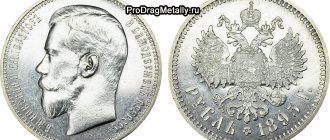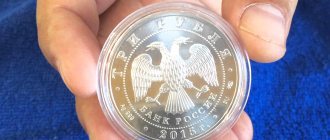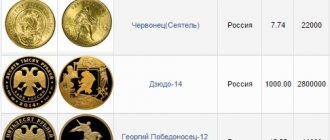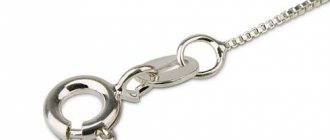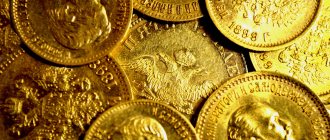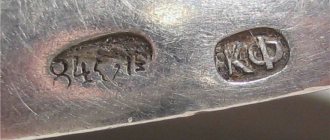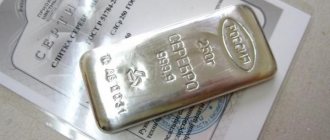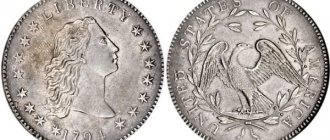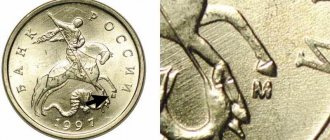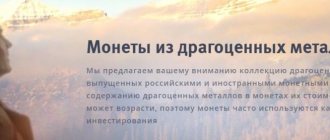Stamps on products before 1927
In 1899, a new mark for products made of precious metals appeared in Russia in the form of a profile of a woman’s head turned to the left. Next to the stamp, letters were required to indicate the initials of the corresponding assay district, as well as the value of the spool assay in Arabic numerals.
However, already in 1908, after the First Russian Revolution, further changes appeared in the appearance of the mark. First of all, this was caused by the need to gradually switch to international standards. True, in 1908, all the changes boiled down to the fact that the female profile on the brand turned to the right. The sampling system remained spool-type.
Silver hallmarks
Hallmarks on silver items from different countries have distinctive shapes and designs. This is more typical for ancient products, because previously almost every city had its own stamps. Over time, the system of world designations has been simplified and gradually unified, and to date, simply metric data reflecting the sample size of the metal is mainly used. Already in modern times, almost all European states had their own branding system. The most common products are naturally items from the most powerful European powers: France, England, Sweden, Russia.
On French items, stamps can be used to quickly determine the silver standard, the place and date of production of the item. From 1798 to 1819, the imprint was an image of a rooster, and the number 1 or 2 meant its standard - the highest (950 standard silver) or lower (800 standard silver) standard. By 1838, stamps were affixed in the form of a man's head - the Old Man brand, and later - the profile of a woman's head - the Minerva brand.
In England, silver hallmarking was officially recognized in 1300. And the image for it was the head of a British lion in a crown. Since 1363, by state decree, each city acquired its own silver mark. And already in 1784-1890. 5 types began to be used - the state mark, the workshop mark, the annual mark, the city mark and the tax mark (the profile of the reigning monarch). From 1891 to the present day, the first four marks have been used. The tax stamp was abolished during the reign of Queen Victoria.
In Germany, from 1548, silver objects bore the stamp of the master and the city magistrate, that is, the Cologne mark. And since 1888, silver marks began to contain only: the impression of the master or company; silver standard in the form of numbers; an image of a crescent turned to the right, as well as the emperor’s crown.
In Russia, the obligatory mark for all silver products was the silver standard, usually the 84th standard, which corresponded to the 875th standard in the metric system, as well as the city mark and the mark of the assay inspector. Since the end of the 19th century, a single mark appeared - a female profile in a kokoshnik, next to which there was a number indicating the sample, as well as the coordinates of the manager of the assay district.
Transition to the metric assay system
Really major changes occurred in 1927, when Russia switched from the old spool system to the new metric system. At that time, a similar system was already in operation in Germany and soon promised to become an international standard.
Unlike the spool system, which is tied to an exclusively Russian measure of weight - the spool, the metric system allows you to determine the proportion of precious metal in the alloy. For example, a 585-grade alloy contains 585 g of pure precious metal and 415 g of impurities, respectively, per 1000 g of alloy. In this case, the metal sample is indicated on the product with three numbers, and not two, as with the spool system.
The transition to the metric system was not the only new thing in 1927. A new brand appeared, which depicted the head of a worker with a hammer. It is quite natural, given the dramatic political changes in the country and the rise to power of the Soviets.
Regular issues of Soviet silver coins 1921-1931
Coins of the RSFSR
After the October Revolution, the country urgently needed monetary reform.
Its implementation was constantly postponed due to the unstable external and internal situation. At this time, real chaos reigned in the monetary system: coins made of precious metals were withdrawn from circulation by the population, and new money was issued only in paper form. The paper money of the tsarist era circulated in parallel with the new money of the provisional government and Sovznak, and they all rapidly depreciated. The population quickly lost confidence in state bank notes. Royal gold and silver coins, on the contrary, were highly valued and became part of a large number of treasures hidden during hard times. Some cities even began printing their own money. At the same time, attempts are being made to completely abandon money within the framework of the doctrine of communism. However, these attempts were unsuccessful. The policy of war communism has reached a dead end, change is overdue. The Bolsheviks, seeing this, began to implement a new economic policy. As part of the NEP measures, it was also planned to restore the destroyed monetary system and defeat inflation, because the number of paper money was already running into millions. The course towards stabilization led to the issue in 1922 of the first hard Soviet money - paper chervonets, backed by gold (1 chervonets = 7.74 grams of pure gold), which was equivalent to 10 imperial rubles. In 1922, the Soviet government decided to issue chervonets in the form of a gold coin, and the very next year they went into circulation.
One chervonets. 1923. Gold. 900 sample. Total weight: 8.603 grams. Pure gold: not less than 7.742 grams. Diameter: 22.60 mm. Thickness: 1.70 mm.
On the front side there are chervonets surrounded by the slogan “Workers of all countries, unite!” The coat of arms of the RSFSR is located, on the back there is a depiction of a peasant sower against the backdrop of a factory in the rays of the rising sun. Here is also the designation of the denomination “ONE CHURVONETS” (the inscription is made in Slavic font) and the date. In the design of the obverse of the chervonets, A.F. Vasyutinsky used the image of a peasant sower, inspired by the sculpture of Ivan Shadr. In the future, this image will be repeatedly used in the design of banknotes and bonds issued in 1924-1927.
The reform assumed complete disposal of the sovznak, which happened in 1924. At the same time, the circulation of silver change coins in denominations of ten, fifteen, twenty, fifty kopecks and 1 ruble, minted since 1921, begins.
10 kopecks. Weight: 1.8 g. Diameter: 17.27 mm. Silver. 500 sample.
15 kopecks. Weight: 2.7 g. Diameter: 19.56 mm. Silver. 500 sample.
20 kopecks. Weight: 3.6 g. Diameter: 21.8 mm. Silver. 500 sample.
The design of the obverses of the coins is the same and copies the obverse side of the chervonets. The reverses of 10, 15 and 20 kopeck coins are made in the same key: inside the wreath is the denomination and date, on top is a star emitting long rays. The reverse of 50 kopecks and the ruble was different from that of small coins. It depicts a five-pointed star framed by a wreath and the denomination designation. The date was also minted on the same side.
Ruble. Weight: 20.03 g. Silver. 900 sample. Pure silver 4 spools 21 shares. Diameter: 35 mm.
50 kopecks. Weight: 10 g. Silver. 900 sample. Pure silver 2 spools 10.5 shares. Diameter: 26 mm.
According to the plan of the Soviet government, these coins were supposed to retain all the parameters (weight, metal, fineness and diameter) of pre-revolutionary coins of similar denomination. As before, for 1 ruble and 50 kopecks, the 900th standard of silver was used, and for the smaller denomination, the 500th.
Silver coins of the Soviet Union
In 1922, the USSR was formed, which required the development of a new design for a line of coins from 10 kopecks to 1 ruble. These coins began to be minted in 1923. Now on the reverse of the ruble is a worker showing the peasant the path to a new life. Their powerful figures stand against the backdrop of the plant and the rising sun. Perhaps this plot illustrates the strengthening of the economic union of the working class and the peasantry. The changes did not spare the fifty-kopeck coin either. From now on, it began to be called “fifty dollars”, and on the reverse was a worker raising a hammer over an anvil (popularly nicknamed “hammer”). A worker stands against the backdrop of a plow, the peasant’s main tool of labor. These coins were not just money, but also a propaganda tool. They illustrated the political and economic course of the new Soviet state, as a state of workers and peasants.
One ruble. Weight: 20 g. Silver. 900 sample. Pure silver 18 grams. Diameter: 35 mm.
One fifty dollars. Weight: 10 g. Silver. 900 sample. Pure silver 9 grams. Diameter: 26 mm.
The obverse of the new coins stylistically echoed the design of banknotes of the 1921-1923 model, but instead of the coat of arms of the RSFSR, the coat of arms of the USSR was minted on the shield. For change coins (10, 15 and 20 kopecks) on the denomination side, tree branches were replaced with ears of wheat.
10 kopecks. Weight: 1.8 g. Diameter: 17 mm. Silver. 500 sample.
15 kopecks. Weight: 2.7 g. Diameter: 19.56 mm. Silver. 500 sample.
20 kopecks. Weight: 3.6 g. Diameter: 21.8 mm. Silver. 500 sample.
The Soviet mints could not cope with the heavy load, and part of the minting of fifty dollars had to be carried out in England. The Soviet government entered into an agreement with the Royal Mint in London to produce 40 million fifty dollars! It is easy to distinguish foreign minted coins: on the edge of the London coins there is an inscription stamped: “9 grams of pure silver (2 z. 10.5 d. T. R.)”, where the letters are “T. R." or "F. R." - the initials of Thomas (Thomas) Ros, who was responsible for their minting. The edge of the fifty-kopeck pieces issued by the Leningrad mint has the same inscription, but ends with the initials “P.L.” (Peter Latyshev).
The issue of silver coins did not last long. Rubles were minted only in 1924, and fifty dollars a little longer - until 1927. The last small Soviet silver coins were minted in 1931, but in a very small edition. To date, the 1931 issue is the rarest and most expensive.
Since 1931, the USSR government stopped minting silver coins in denominations of 10, 15 and 20 kopecks. From now on they are made from a copper-nickel alloy. They completely abandoned the issue of ruble denominations and fifty-kopeck notes.
It is worth noting that silver coins from the 1920s remained legal tender thereafter and were theoretically in circulation until the currency reform of 1961. But in practice they were no longer to be found. By the end of the 1920s, silver coins were hoarded by the population, that is, they went into hiding.
For many years after this, silver and gold coins were not issued in the USSR. Their next release was timed to coincide with the 1980 Olympics, held in the Soviet Union. However, they were not put into circulation, since the entire circulation was intended to be sold to foreign collectors, as well as foreign guests of the Olympics.
Silver samples
In the international metric system, the most common silver standards are:
- 800 silver;
- 830 silver;
- 875 silver;
- Sterling Silver;
- 960 silver;
- 999 silver;
You can learn about what other silver samples there are: concept, types, authenticity here.
Current price per gram of 875 silver
Below is the rate chart: Silver standard 875 cost per gram in rubles.
As of May 30, 2021 the price per gram of silver 875 is 36 rubles. 53 kopecks
The cost of a silver item that has antique value will depend on the assessment of specialists. If it is an item with history or a piece of art, the cost of the item can be very high. It is not worth investing in 875 silver as a monetary weapon, although the price is quite stable, it will only be possible to sell it as scrap. To preserve capital, it is better to use metal ingots of a high standard, which are offered by banks.
